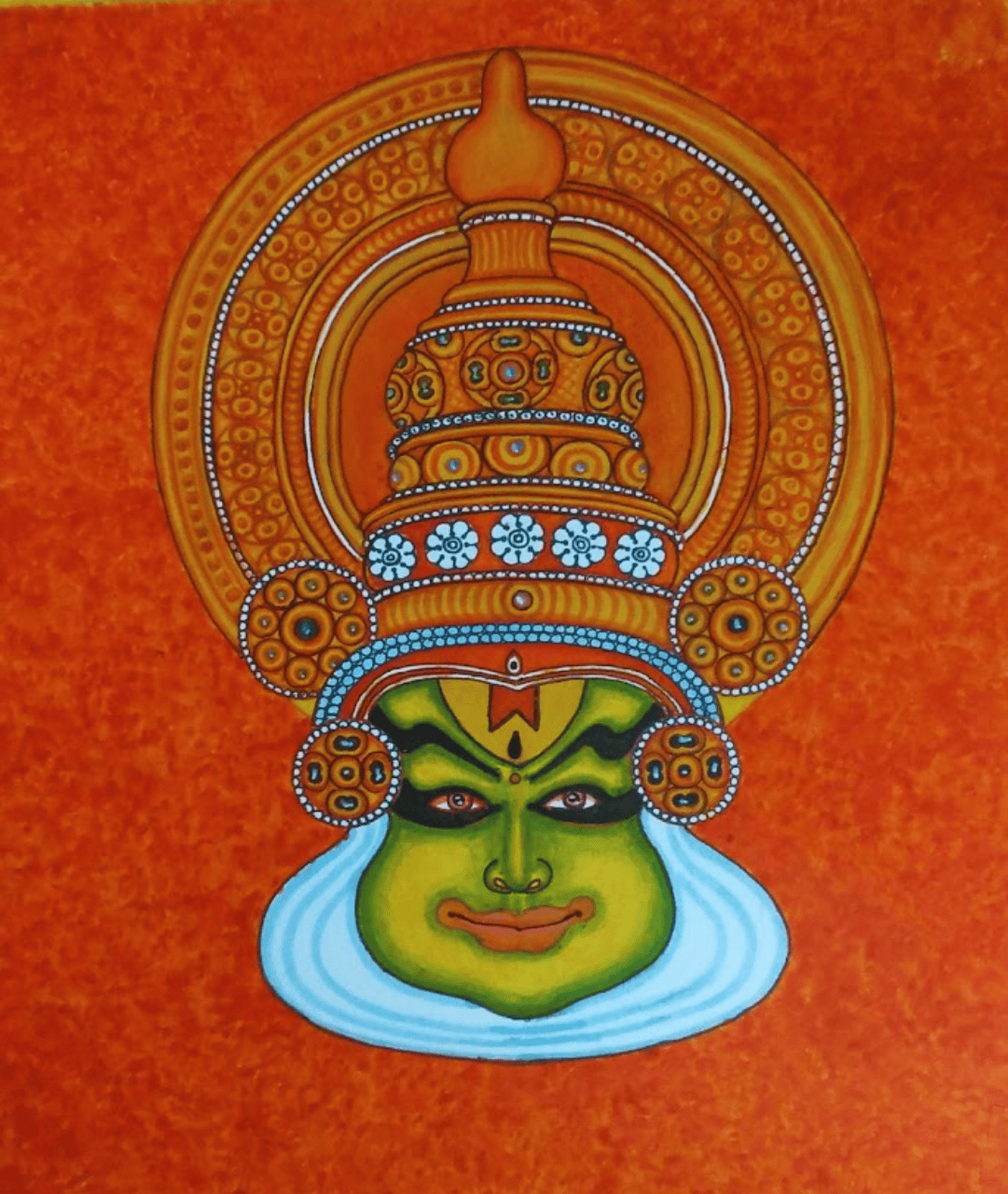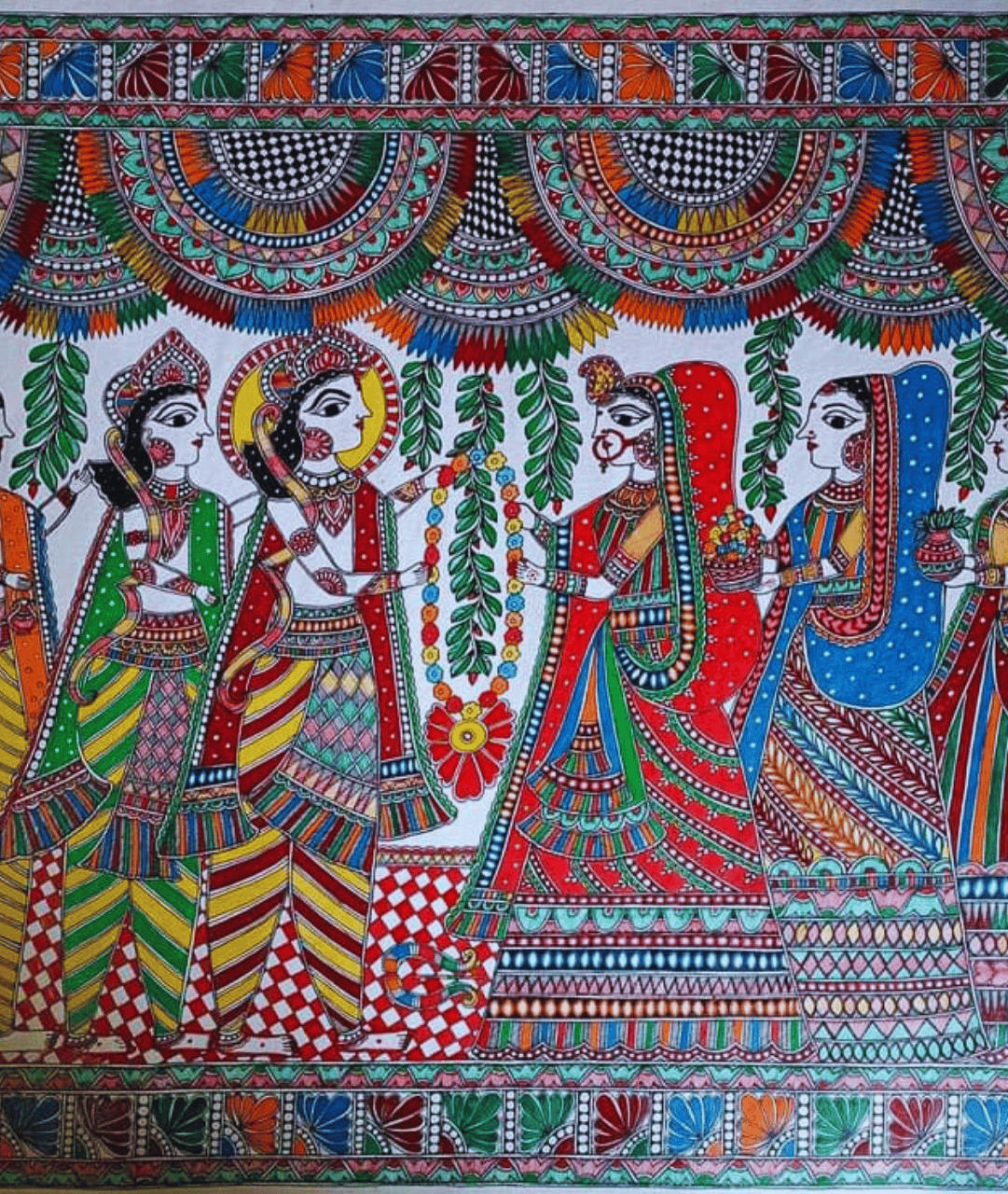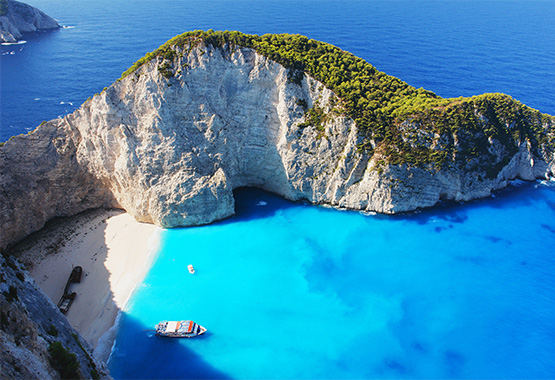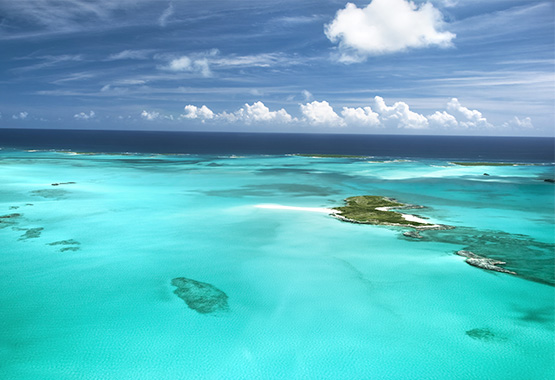Kerala, known as “God’s own country”, is situated on the south-western coast of the Indian subcontinent. Kerala has a rich assortment of religious influence in the crafts which is continued and secured for traditional and cultural retention. It holds the second place in having the largest collection of archaeologically significant mural sites after Rajasthan.
Kerala mural paintings are one of the ancient murals in India. The word ‘mural’ is derived from the latin word ‘murus’, meaning ‘wall’. Murals refer to paintings embellished on visual components like the wall, ceiling, or other huge lasting surfaces. The murals of Kerala stand out for their beauty, clarity and idealistic illustration of humans, animals and trees with rich and delicate strokes, hued with bright colours. These paintings belong to a distinguished lineage with its tradition carrying historical influences from the famed Ajanta caves. The themes are depicted using common iconographic symbols from the Puranas like Ramayana and Mahabharata from the Hindu mythology, which is illustrated highly with brilliance stylistically.
The peculiarities of Kerala Murals is the elaborate eye which speaks volumes. Shading is predominantly packed with dots depending on the shading pattern and merely five colours are used; although now blue is introduced. Instead of a plain backdrop, Kerala murals often feature a vibrant red base. This red isn't a flat colour, but rather a richly layered one. The artist starts with a base coat, then builds upon it with additional shades of red and brown, applied in a subtle stippling technique. This creates a dynamic and textured ground for the rest of the mural, while cleverly reserving patches of the original white base coat to add highlights and depth.
Traditionally, artists relied on a harmonious blend of vibrant hues inspired by nature, using mineral pigments extracted from leaves, fruits, stones, and ores. The colours are blended in a wooden bowl along with tender coconut water and extracts of the Neem tree. Known as Panchavarna, this five-colour palette features yellow symbolising purity and knowledge, red representing power and energy, green signifying nature and prosperity, black denoting darkness and ignorance, and white standing for enlightenment and peace.
- Green is obtained through various methods. One approach involves extracting the blue pigment from Neela Amari leaves (Indigofera tinctoria) and applying it as a base. Afterward, yellow is applied over the blue to achieve the green colour, or vice-versa
- Black, from the soot of the sesame oil which is collected inside a mud pot or burnt husk.
- Yellow is obtained from turmeric powder or from fine ground laterite stones which are used for yellow and red, which is filtered and dried.
- Red colour is traditionally obtained from red laterite stones.
- White is obtained from lime.
Also, the order of colouring in Kerala murals follows a specific sequence: yellow, red, green, blue (a later addition), and brown (a mix of red and yellow). Interestingly, white itself is not applied but rather preserved from the initial coating, creating contrasting highlights and depth. For shading, black is used to delineate and bring life to the portrayal. Finally, the painting is over-coated with pine resin and oil for a protective sheen. There are about six stages to Kerala Mural paintings, they are as follows:
- First Stage: Lekhya Karma – Stage of sketching using a pencil or crayon.
- Second Stage: Rekha Karma – Outlines made on the sketches.
- Third Stage: Varna Karma - Painting with colours of the human figures depending on the characters and common qualities.
- Fourth Stage: Vartana Karma - Shading is done.
- Fifth Stage: Lekha Karma -Final outlines of the painting, usually painted in black.
- Sixth Stage or the Final Stage: Devika Karma - The final and the finishing touches are done to the painting. On completion, the mural is offered pooja and worshipped with ritual songs, which is handed from one generation to another through vocal traditions only.
The traditional methodology of drawing mythical figures on the floor was called Dhuleechitramor powder drawing, using natural pigments, which is called Kalam (Kalamezhuthu). Over time, Kerala Mural painting faced challenges due to environmental degradation, lack of patronage, and the decline of traditional painting practices. However, there has been a resurgence of interest in this exquisite art form in recent years. Efforts have been made to conserve and revive the traditional techniques and styles of Kerala Mural Painting.
Kerala mural painting is a traditional fine art form that requires patience and perseverance to master it. There are many problems faced by people who are new to Kerala mural painting. The disadvantages of prefabricated murals and decals are that they are often mass-produced and lack the allure and exclusivity of original artwork. They are often not fitted to the individual wall sizes of the client and their personal ideas or wishes cannot be added to the mural as it progresses.
To truly appreciate the intricate beauty of Kerala Mural Painting, one must witness it first hand—several temples and museums across Kerala house magnificent collections of these murals. A visit to these sites allows you to immerse yourself in the region's rich cultural heritage and marvel at the skill and artistry of the painters.
Additionally, By supporting these artists and their creations, you preserve and continue this extraordinary art form.
Additionally, By supporting these artists and their creations, you preserve and continue this extraordinary art form.









































